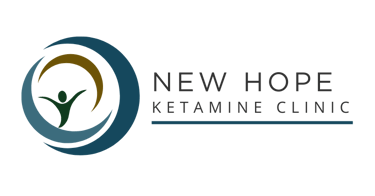Address: 21660 W Field Pkwy, Suite 301, Deer Park, IL 60010

The Biopsychosocial Model of Depression
9/18/2025


Depression is a complex, multifactorial condition. It is seldom caused by just one thing. The biopsychosocial modeloffers a way to understand depression through three interlocking domains:
Biological (bio)
Psychological (psycho)
Social
Each domain contributes to the onset, course, and recovery from depression. By appreciating how they interact, one can design more effective assessments and treatments.
What Each Domain Includes
Biological factors may include:
Genetic predisposition
(family history of depression or mood disorders)Neurochemical imbalances
(serotonin, norepinephrine, dopamine, glutamate, GABA, etc.)Physical health conditions
(chronic illness, inflammation, pain, hormonal changes)Sleep disturbance
Nutritional deficiencies
Brain structure and function
(neural circuits, neuroplasticity)Age, sex, hormonal status
(e.g. perinatal, menopausal)
Psychological factors include:
Personality traits (e.g. high neuroticism, low resilience)
Cognitive patterns: negative thinking, rumination, pessimism, catastrophizing
Early life experiences (trauma, neglect, attachment)
Coping skills (adaptive vs. maladaptive)
Self-esteem, sense of worth, beliefs about self and future
Stress response: how one handles internal pressures
Social factors include:
Relationships (family, friends, romantic, community)
Social support (quality and quantity)
Socioeconomic status: financial stress, job security
Cultural factors, stigma, expectations
Life events (loss, transitions, job change, bereavement)
Environmental stressors (housing, neighborhood safety)
How They Interact
Biological vulnerabilities may increase risk in presence of psychological or social stress.
Psychological factors may mediate or amplify the impact of biological stress (for example, rumination prolongs episodes).
Social adversity can trigger or worsen depression, and also influence psychological responses.
For example, someone with genetic vulnerability, who experiences a major life loss (social factor), with limited coping skills (psychological factor), might develop a depressive episode. Alternatively, someone might have poor sleep and chronic inflammation (biological), which jointly with lonely social life and negative beliefs about themselves and the future, spiral into depression.
Why the Biopsychosocial Model Matters
It promotes holistic assessment: instead of just asking about mood and symptoms, one considers lifestyle, relationships, physical health etc.
It supports multi-pronged treatment: combining medication, psychotherapy, lifestyle changes, social interventions.
It helps reduce stigma: recognizing that depression isn’t “just in the mind” or “just weakness,” but an interplay of real body, mind, and environment.
It allows for personalized care: two people with depression may need very different interventions depending on which domain is most disturbed.
How to Use Self‑Assessments Wisely
Don’t interpret as definitive: always share with a mental health professional if positive or severe.
Use them over time: assessing weekly or bi‑weekly helps detect improvement or worsening.
Use more than one if needed: e.g. PHQ‑9 plus ISI to see how sleep is contributing; or PHQ‑9 plus GAD‑7 if there is co‑occurring anxiety.
Reflect on results: what symptoms are worst? Which domains (bio, psycho, social) seem most affected? This helps guide what to address first.
Here are tools you can try (alongside, or in some cases before, professional help), mapped roughly to the biopsychosocial domains. Consistency matters.
Biological / Physical
Improve Sleep Hygiene: fixed sleep schedule, wind‑down routine, reduce screens, and manage light and noise.
Nutrition: balanced diet; consider deficiencies (vitamin D, B vitamins, omega‑3).
Physical Activity: aerobic exercises (walking, jogging, cycling), strength training, yoga. Even short periods (10‑20 min) can lift mood.
Mind‑Body Interventions: mindfulness meditation, progressive muscle relaxation, breathing exercises.
Medical Evaluation: review whether physical illnesses, thyroid disorders, inflammation, and chronic pain are contributing; check medications for side effects.
Psychological
Cognitive Behavioral Techniques: identifying negative automatic thoughts, challenging cognitive distortions, and thought records.
Behavioral Activation: scheduling enjoyable or meaningful activities, even if you don’t feel like it. Getting started is key.
Problem‑Solving Therapy: breaking large stresses into smaller, manageable steps.
Stress Management: relaxation, boundaries, time management.
Self‑Compassion & Mindfulness: observing thoughts and feelings without harsh self‑judgment.
Social / Environmental
Build / Strengthen Support Networks: reach out to friends, family, and peer groups. Join support groups.
Lifestyle Changes: Reduce environmental stressors, ensure a safe and comfortable living space.
Work / School Adjustments: modified load, flexible schedules, seeking accommodations.
Community Engagement: volunteering, joining clubs, faith groups, etc, can boost a sense of belonging.
Addressing Social Determinants: financial planning, access to care, and advocacy if needed.
Integration
Often, interventions combining domains are best. For example: integrate exercise (bio) + cognitive work (psycho) + social supervision/accountability (social).
Self‑Help Tools & Strategies
The Role of Ketamine Infusion Therapy
In recent years, ketamine infusion therapy has gained attention for its potential to help people with depression — especially treatment‑resistant depression (TRD). Below is what current evidence and critique suggest.
What Is Ketamine Therapy
Ketamine is a medication originally used as an anesthetic. At lower, sub‑anesthetic doses, administered under medical supervision (often intravenously), it has been found to produce rapid antidepressant effects in people who haven’t responded to traditional treatments. There are also other delivery forms (nasal, oral), but IV infusions are the most studied for rapid onset. (PMC)
Mechanisms: How Does It Work
Glutamatergic system: Ketamine acts as an NMDA receptor antagonist, modulating glutamate neurotransmission; this is different from how typical antidepressants (SSRIs, SNRIs) work. (Yale Medicine)
Neuroplasticity: Research suggests ketamine can promote growth of new synapses (“dendritic spines”) in parts of the brain involved in mood regulation. It may reverse deficits linked to depression. (WCM Newsroom)
Rapid effect: Some people experience improvement in mood, suicidal thoughts, energy, etc., within hours or days of receiving an infusion. (PMC)
Evidence & Benefits
In TRD populations, a single 40‑minute IV infusion has been shown to lead to >50% improvement in depressive symptoms in about half of patients, within hours or days. (Frontiers)
Repeated infusions can extend the antidepressant effect. There is some evidence that effects last for days to a few weeks, sometimes longer when paired with additional supports (psychotherapy, lifestyle). (PMC)
It has significant anti-suicidal effects in some studies; reductions in suicidal ideation have been documented rapidly following ketamine infusions. (JAMA Network)
It can also help with co‑occurring physical symptoms, such as pain in some cases (depression & pain relief), when traditional treatments have failed. (JAMA Network)
Limitations, Risks & Considerations
Duration: The beneficial effects often fade after several days to a few weeks; maintenance or repeat infusions are usually needed. (PMC)
Side effects: During infusion or shortly afterward, people may experience dissociation, perceptual changes, increased heart rate or blood pressure, nausea, and dizziness. Most effects are transient. (University Hospitals)
Safety concerns: risk of misuse or dependency, potential urinary issues, liver concerns with frequent use, plus interactions with other medications or medical conditions. Not suitable for everyone. (University Hospitals)
Cost & accessibility: often not covered by insurance; clinics offering it can be expensive. Also requires medical oversight and trained staff.
Not a first‑line in most guidelines: usually considered when depression has not responded to standard treatments (medications, psychotherapy).
For Whom It Seems Most Helpful
Individuals with treatment‑resistant depression (failures of multiple antidepressants, or combination treatments).
Those with high suicidal ideation need rapid relief.
People who have few contraindications (medical conditions, potential interaction risks).
Usually, in a setting where repeat infusions or follow‑up treatment (psychotherapy, lifestyle change) are possible to sustain gains.
Ketamine therapy primarily acts in the biological domain: altering neurotransmitters, enhancing neuroplasticity, and improving physical symptoms of depression. But for maximal and sustainable outcomes, it should be integrated with interventions in psychological and social domains.
● Psychological integration: therapy sessions (CBT, psychodynamic, acceptance & commitment) after ketamine infusions may help consolidate insights, reframe beliefs, reduce negative thinking, and provide skills for coping when the ketamine effect wanes. Some studies show better maintenance of benefits when therapy is combined. (MDPI)
● Social supports: supportive relationships help hold gains; engagement with a supportive community can reduce isolation and negative social stressors.
● Lifestyle / environmental: sleep, nutrition, exercise, managing stressors, reducing pain,etc., all can interact with ketamine’s effects.
How Ketamine Fits into the Biopsychosocial Model
Self‑Assessments + Decision Framework: When to Consider Options like Ketamine
Here is a simplified decision/checklist you might use (or discuss with your provider) when considering more intensive treatments like ketamine:
1. Assess severity and duration
○ Using tools like PHQ‑9, BDI‑II (if accessible) to measure severity. If symptoms are severe and/or long‑standing.
2. Check previous treatment history
○ Have you tried at least 2‑3 antidepressants (or combination therapy) and psychotherapy? What response did you get?
3. Evaluate risk
○ Suicidal ideation? Chronic pain? Comorbid anxiety? Medical conditions?
4. Medical evaluation
○ Cardiovascular, liver, renal, psychiatric comorbidities, substance use.
5. Support in place
○ Access to mental health clinician, therapy, social support, and lifestyle changes.
6. Set realistic expectations
○ Ketamine may reduce symptoms quickly, but may not be a cure. Ongoing maintenance or boosters might be necessary.
Self‑Help Tools & Practices You Can Start Now
Even if ketamine or medical interventions aren’t immediately available or desired, many self‑help practices based on the biopsychosocial model can reduce suffering.
● Mood Tracking: Your phone or journal: track daily mood, sleep, activity, what helped vs what worsened. This builds awareness.
● Routine: Establishing regular sleep, wake time; regular meals; scheduling pleasurable / meaningful activity.
● Physical Activity: Start small—walk 10 minutes daily, stretching or yoga. Build gradually.
● Mindfulness/Meditation: Even short guided meditations (5‑10 mins), body scans can help reduce rumination.
● Gratitude Practice: Daily note of 1‑3 things you are grateful for.
● Cognitive Tools: Identifying negative/twisted thoughts (e.g. “I always fail,” “nothing will get better”), challenging them with counter‑facts, and replacing them with more balanced thoughts.
● Social Connection: Reach out to friends/family; join peer support; share what you’re going through if safe.
● Stress Management: Relaxation techniques, setting boundaries, saying no, reducing overload.
● Sleep Hygiene Measures:
1. Go to bed and wake up same time daily
2. Limit screen exposure before bed
3. Make bedroom environment comfortable (dark, quiet, cool)
4. Avoid caffeine late in day
Research Evidence in Support
Some of the recent findings worth noting:
● A 2024 study of IV low-dose ketamine infusions for treatment‑resistant depression found a significant reduction in depressive symptoms and suicidal ideation. (ScienceDirect)
● That same study showed ~ 54.9% response rate by treatment endpoint. (ScienceDirect)
● Another study combining psychotherapy with repeated high‑dose ketamine infusions showed that effects could be sustained over 30 days. (MDPI)
● Also, ketamine has some benefit in patients who have both depression and chronic pain, helping with both mood and pain relief. (JAMA Network)
Caveats & What Is Still Unknown
How best to maintain ketamine’s benefits long‑term (dosing schedule, booster infusions, adjunct therapies) is still under study. (Frontiers)
● Long‑term safety data are limited. Frequent infusions may have risks (urinary, liver, and cognitive).
● Individual variability: some people respond very well; others have small or transient benefits.
● Cost & access barriers: affordability, insurance coverage, geographic availability.
You should consider getting professional help if:
● Self‑assessments indicate moderate‑severe depression (e.g., PHQ‑9 high score).
● Suicidal thoughts, plans, or self‑harm ideation or behaviors.
● Marked deterioration in functioning: inability to work, manage daily tasks, severe hopelessness.
● Co‑occurring severe medical illness or risk (e.g., pain, cardiac disease, etc.).
● No improvement after several weeks of self‑help interventions. Professionals (psychiatrists, psychologists, primary care physicians) can help tailor treatment, consider medication, ketamine, and coordinate multi‑domain interventions.
When to Seek Professional Help
Summary & Key Takeaways
● Depression is best understood via the biopsychosocial model: biological, psychological, and social factors all matter.
● Self‑assessments like PHQ‑9, GAD‑7, ISI, Beck Hopelessness Scale, etc., are useful tools for monitoring, not diagnosing.
● Self‑help strategies across all domains (sleep, exercise, cognition, social support) can moderate symptoms and improve outcomes.
● Ketamine infusion therapy offers a promising option, especially for treatment‑resistant depression or for rapid alleviation (e.g., suicidal thoughts). The evidence shows rapid antidepressant effects, improvements in mood, and sometimes pain relief, but with limitations regarding duration, cost, and safety.
● Integrating ketamine with psychological therapy and social support tends to produce more sustained benefit.
1. Ketamine for the Treatment of Mental Health and Substance Use Disorders — A review article on ketamine’s effects in depression. (PMC)
2. IV Low Dose Ketamine Infusions for Treatment Resistant Depression (2024) — recent data on response and suicidal ideation. (ScienceDirect)
3. The Effects of Psychotherapy on Single and Repeated High‑Dose Ketamine Infusions — evidence about combining with psychotherapy and outcomes up to 30 days. (MDPI)
4. Depression Assessment Instruments — APA guidelines, etc. (American Psychological Association)
Suggested References & Resources
Health Care Professionals' Resources
Sign Up To Receive The Latest Updates On Ketamine Infusion Therapy And Spravato Nasal Spray For Mental Health




Contact Us
21660 W Field Pkwy
Suite 301
Deer Park, IL 60010
Phone:
847-232-4045
Fax:
847-232-4042
Email:
info@newhopeinfusion.com
Treatments
Disclaimer
© 2024. All rights reserved.
Pages
Hours of Operation
Monday 9:00am- 5:00pm
Wednesday 9:00am- 5:00pm
If you or someone you care about is currently facing a crisis, we strongly urge you to contact the National Suicide Prevention Lifeline at 800-273-8255 or call 911 for immediate assistance.
